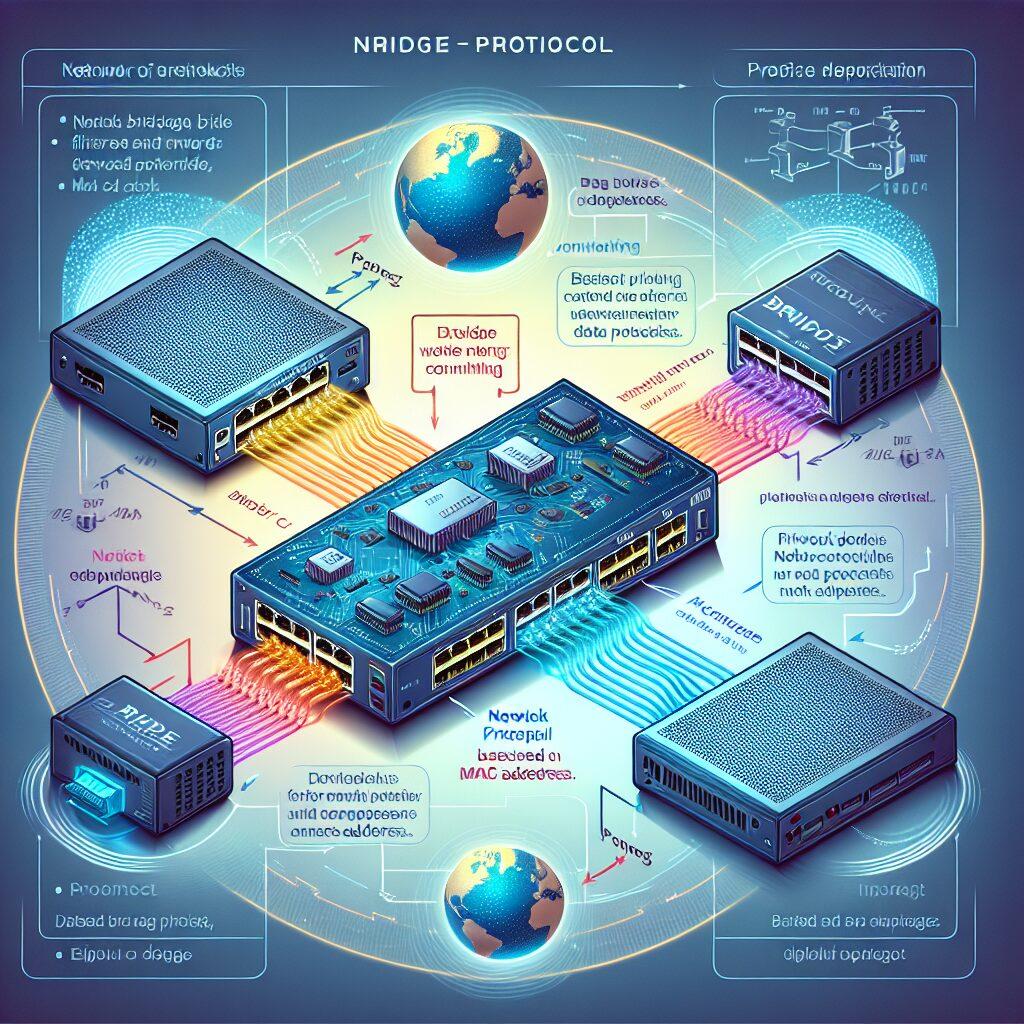– Understanding the Basics of Bridge Protocols

Bridge protocols serve as essential components in the blockchain ecosystem, facilitating the seamless transfer of assets and data between disparate blockchain networks, which is crucial for enhancing interoperability and expanding the functionality of decentralized applications. By understanding the basics of bridge protocols, one can appreciate how they enable these interactions by acting as intermediaries that validate and relay transactions across different blockchains, ensuring that assets are securely locked on the source chain while equivalent assets are minted or unlocked on the destination chain. This process involves various technical components, such as smart contracts and validators, which work in tandem to maintain the integrity and security of the cross-chain operations, thereby minimizing the risks associated with asset transfers. However, despite their critical role, bridge protocols are not without challenges, as they must address issues related to consensus mechanisms, trust models, and potential points of failure, which can arise from the complex nature of coordinating multiple blockchain networks. As such, a deep understanding of bridge protocols is vital for developers and users alike, as it empowers them to make informed decisions about the security and efficiency of their cross-chain activities, ultimately contributing to the broader adoption and success of blockchain technology.
– Common Vulnerabilities in Cross-Chain Bridges

Cross-chain bridges, which facilitate the transfer of assets and data between different blockchain networks, are indispensable in the rapidly evolving digital landscape; however, they are also prone to several vulnerabilities that can be exploited by malicious actors. One common vulnerability lies in the inadequate validation of data and transactions passing through the bridge, which can lead to unauthorized access or manipulation by hackers who seek to exploit these weaknesses for financial gain. Additionally, the complexity of bridge protocols often results in coding errors or misconfigurations that can be leveraged by attackers to execute fraudulent transactions or siphon off digital assets. Another significant vulnerability is the reliance on centralized validators or oracles, which, if compromised, can undermine the entire security framework of the bridge, allowing attackers to execute double-spending attacks or create counterfeit tokens. Furthermore, the lack of standardized security practices across different blockchain networks contributes to the difficulty in maintaining robust security measures, as each network may have different protocols and mechanisms that can be exploited by hackers. As a result, it is imperative for developers and stakeholders to prioritize the identification and mitigation of these vulnerabilities to ensure the integrity and security of cross-chain bridges, thereby fostering trust and confidence in the broader blockchain ecosystem.
– Techniques Hackers Use to Exploit Bridge Protocols

In the realm of blockchain technology, understanding how hackers exploit bridge protocols is crucial for enhancing security and mitigating potential risks. Hackers employ a variety of sophisticated techniques to exploit vulnerabilities in cross-chain bridges, often leveraging weaknesses in smart contract code, which can inadvertently allow unauthorized transactions or data manipulation. By carefully analyzing the bridge’s architecture and identifying potential entry points, malicious actors can craft complex attacks that bypass authentication mechanisms or exploit inadequate validation processes, ultimately gaining unauthorized access to valuable digital assets. Additionally, hackers may use phishing attacks to deceive users into divulging sensitive information, which can then be used to manipulate bridge protocols or initiate fraudulent transactions. Another common technique involves exploiting inadequate error handling, where attackers trigger unexpected behaviors in the system to disrupt normal operations or extract information, further compromising the bridge’s integrity. To counteract these threats, it is imperative for developers and security professionals to conduct comprehensive audits and implement robust security measures that address both known and emerging vulnerabilities, thereby safeguarding the bridge protocols from potential exploitation by malicious entities.
– Real-World Examples of Bridge Protocol Attacks

In recent years, the increasing prevalence of bridge protocol attacks has highlighted the vulnerabilities inherent in cross-chain systems, with several high-profile incidents underscoring the need for enhanced security measures and a deeper understanding of how these exploits occur. One notable example is the attack on the Poly Network in August 2021, where hackers exploited a vulnerability in the protocol’s smart contract, leading to the unauthorized transfer of over $600 million worth of cryptocurrency across multiple blockchains, a breach that not only exposed the weaknesses in the bridge’s security but also prompted a significant industry-wide reassessment of cross-chain security practices. Another significant incident involved the Wormhole bridge in February 2022, where attackers managed to exploit a vulnerability in the bridge’s code, resulting in the loss of approximately $320 million in Ethereum, an event that underscored the critical importance of regular code audits and the implementation of robust security protocols to prevent such breaches. These real-world examples serve as stark reminders of the potential risks associated with cross-chain bridges and highlight the necessity for continuous vigilance, comprehensive testing, and the adoption of best practices to safeguard against future exploits. As the blockchain ecosystem continues to evolve, it is imperative for developers and stakeholders to prioritize the security of bridge protocols, ensuring that they are resilient against the increasingly sophisticated tactics employed by malicious actors seeking to exploit these complex systems.
– Security Measures to Protect Against Exploits

To effectively protect against exploits targeting bridge protocols, it is crucial to implement a comprehensive set of security measures that address the various vulnerabilities inherent in cross-chain interactions, thereby ensuring the integrity and safety of digital assets. One fundamental approach involves conducting thorough audits and regular security assessments, which can help identify potential weaknesses in the bridge protocol’s architecture and coding, allowing developers to address these issues before they can be exploited by malicious actors. Additionally, integrating multi-signature authentication processes can significantly enhance security by requiring multiple parties to approve transactions, thereby reducing the risk of unauthorized access or manipulation of assets. Employing advanced encryption techniques to secure data transmissions across chains is another essential measure, as it ensures that sensitive information remains protected from interception or tampering during the transfer process. Furthermore, fostering a culture of transparency and collaboration within the blockchain community can lead to the development of more robust security standards and practices, as developers and researchers share insights and solutions to common challenges. By prioritizing these security measures, stakeholders can proactively safeguard bridge protocols against potential exploits, ultimately contributing to the overall resilience and trustworthiness of the blockchain ecosystem.
– Future Trends in Bridge Protocol Security

As we look toward the future of bridge protocol security, it is essential to recognize that the landscape of cross-chain technology is rapidly evolving, which necessitates a proactive approach in developing robust security measures that can effectively anticipate and mitigate potential threats. The increasing complexity of blockchain ecosystems, characterized by the integration of diverse protocols and platforms, underscores the importance of fostering collaboration among industry stakeholders, including developers, researchers, and security experts, to collectively address emerging vulnerabilities and enhance the resilience of cross-chain bridges. Innovations in cryptographic techniques, such as zero-knowledge proofs and multi-party computation, are expected to play a pivotal role in strengthening the security framework of bridge protocols, providing enhanced privacy and integrity assurances that will be crucial in maintaining user trust and safeguarding digital assets. Furthermore, the implementation of automated audit tools and machine learning algorithms can significantly improve the detection and prevention of malicious activities, enabling real-time monitoring and response capabilities that are vital for protecting against sophisticated attacks. As regulatory frameworks continue to evolve, it is imperative for organizations to stay informed and compliant with industry standards and best practices, ensuring that their bridge protocols are not only secure but also aligned with the broader objectives of fostering a secure and interoperable blockchain ecosystem.


